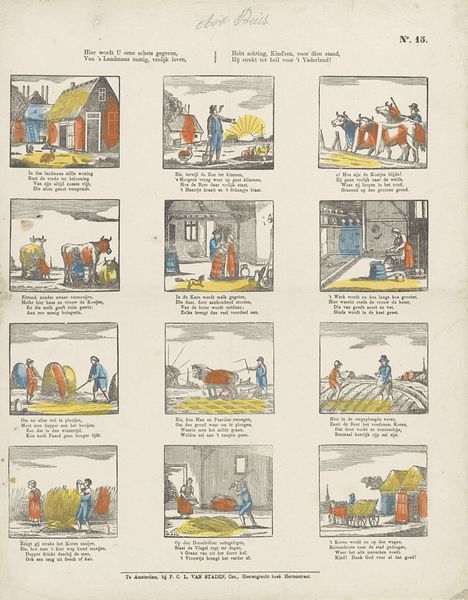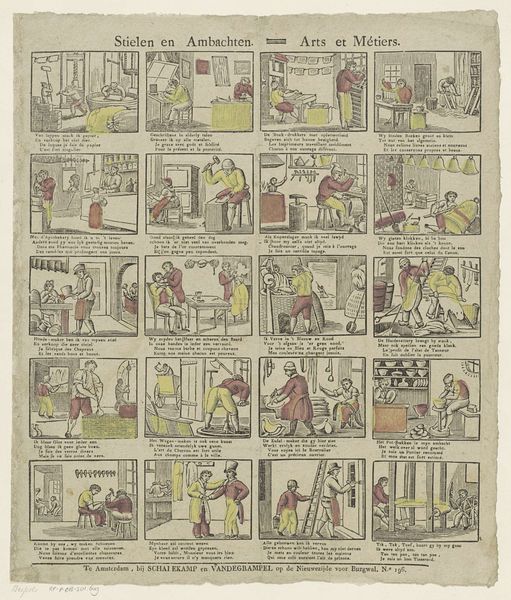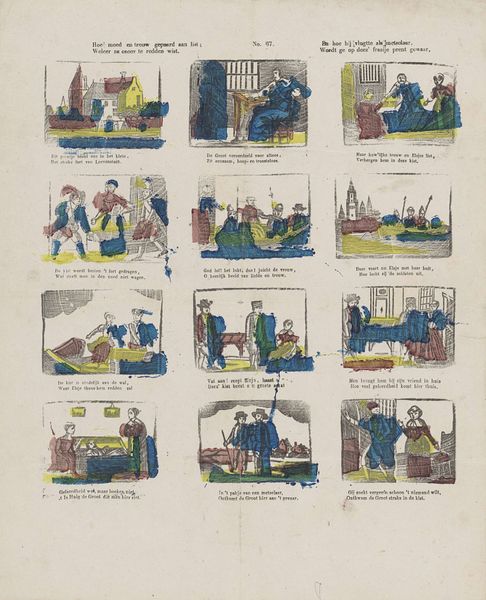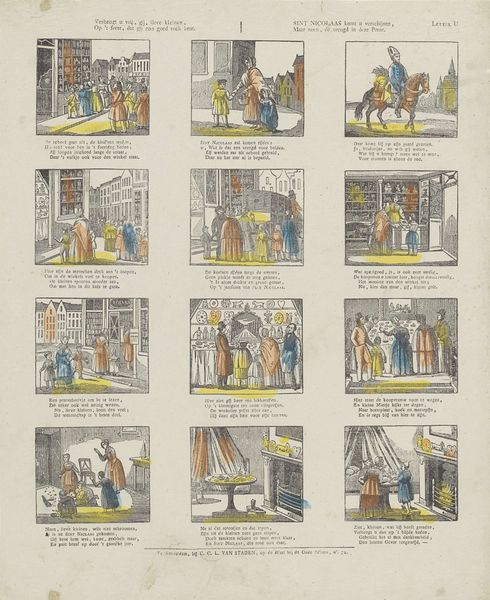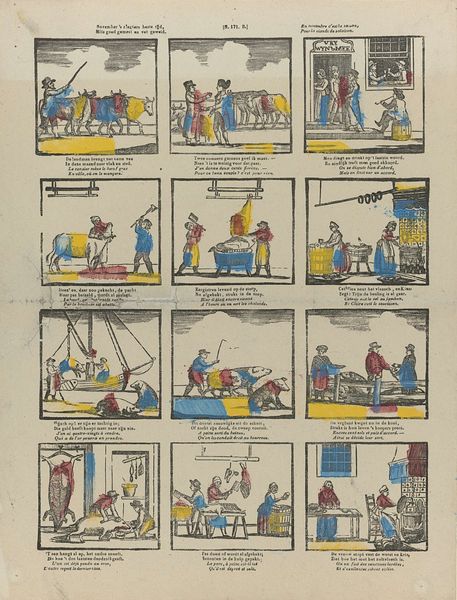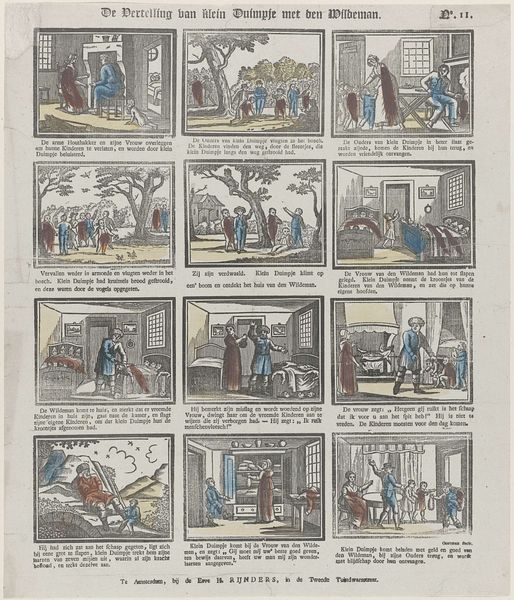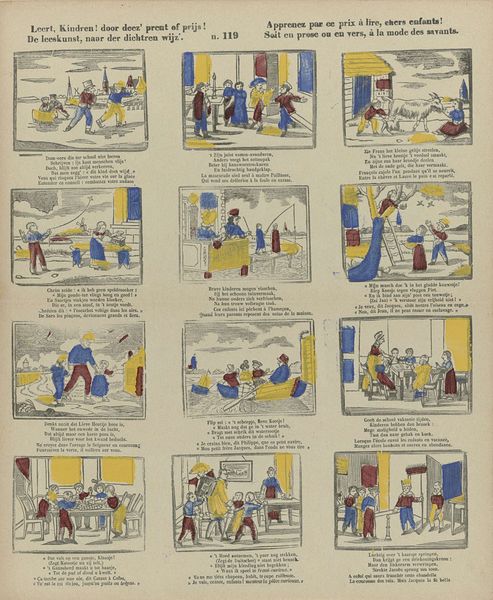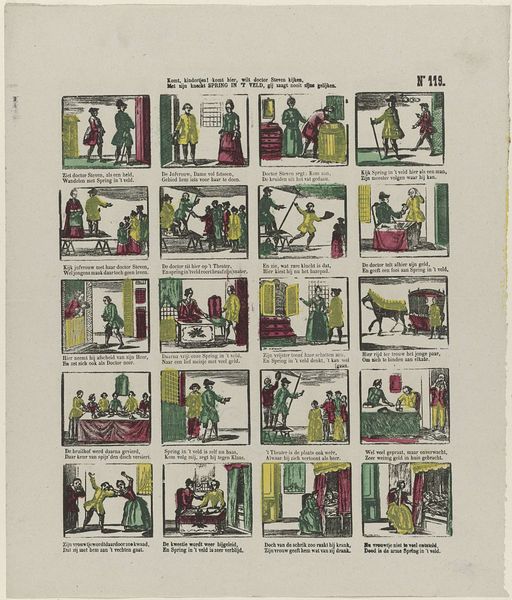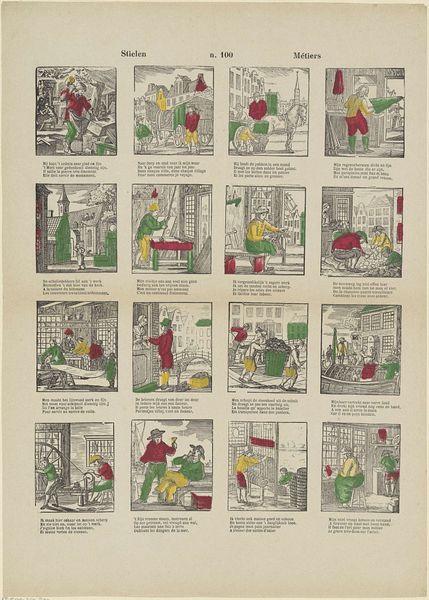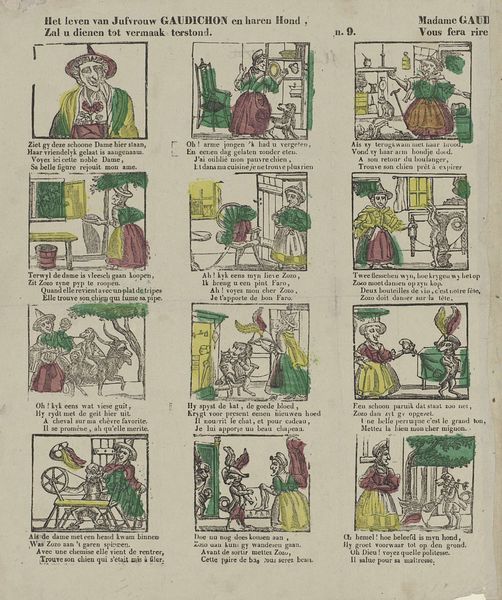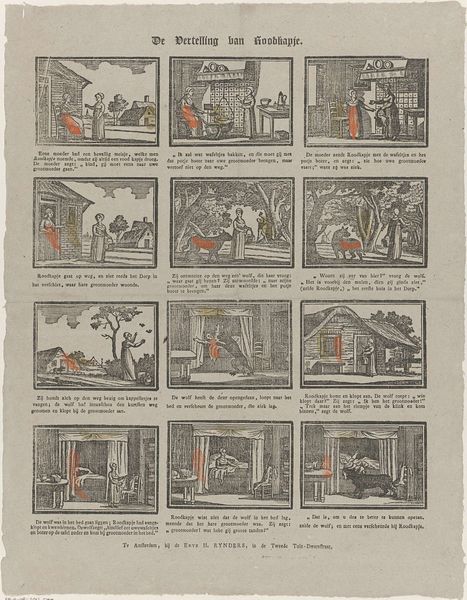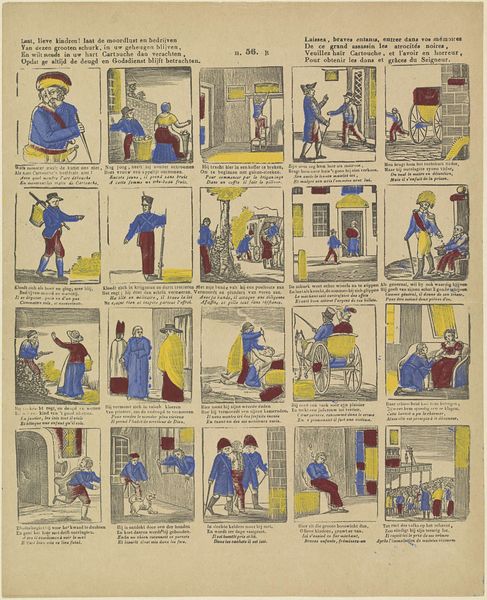
De goede schepper gaf in zijn alwijs bestieren, / Tot voeding van den mensch de redelooze dieren, / Maar 't staat ons nimmer vrij het einde te bespoên / Van 't dier, dat ons niet schaadt of voordeel aan kan doen 1850 - 1870
0:00
0:00
#
narrative-art
# print
#
comic
#
genre-painting
Dimensions: height 373 mm, width 298 mm
Copyright: Rijks Museum: Open Domain
This color lithograph, made by Willem Bal sometime in the 19th century, presents us with a series of images and poetic text revolving around the ethical treatment of animals. During the 1800s, there was growing awareness in Europe regarding animal welfare, influencing art and literature. Bal’s work fits within this context, reflecting a cultural moment where the relationship between humans and animals was being critically examined. The verses accompanying the images discuss the use of animals for human sustenance while questioning the morality of causing unnecessary harm. They invoke the notion of responsible stewardship, suggesting that humans should be mindful of the lives they take. The images display scenes from farm to table, integrating religious undertones about the role of humans as caretakers. Bal seems to be asking: can we reconcile our needs with ethical considerations? The lithograph then becomes a mirror, reflecting our complex relationship with the natural world and our moral obligations within it.
Comments
No comments
Be the first to comment and join the conversation on the ultimate creative platform.

